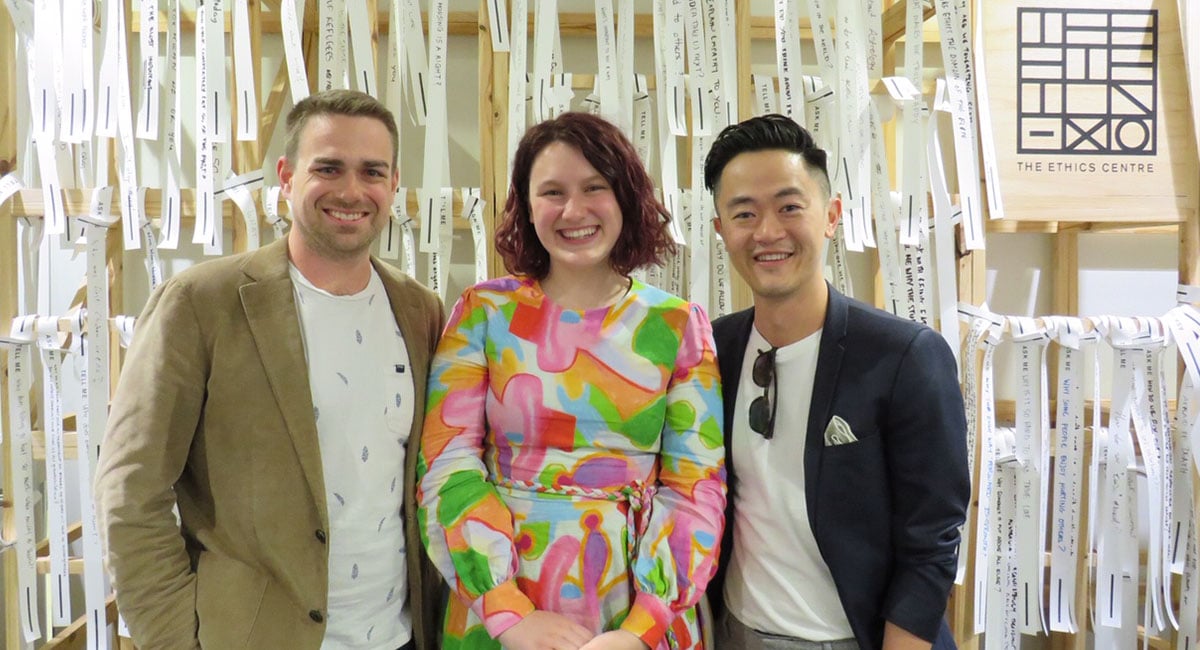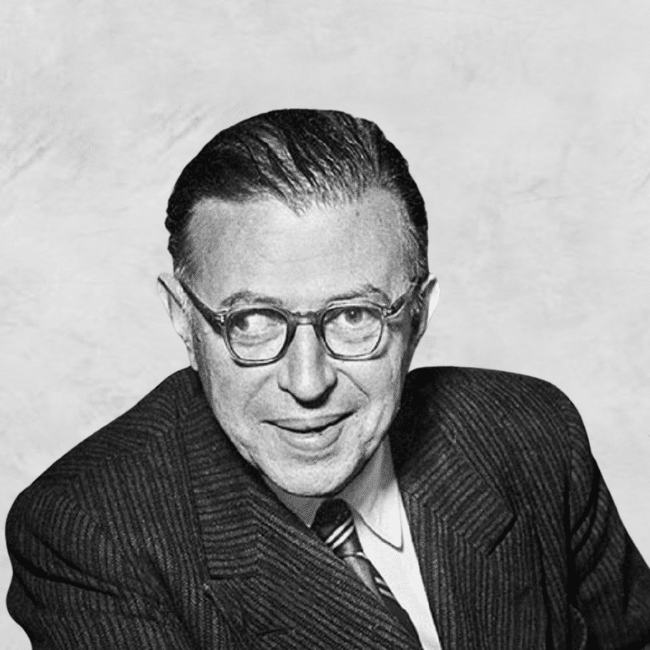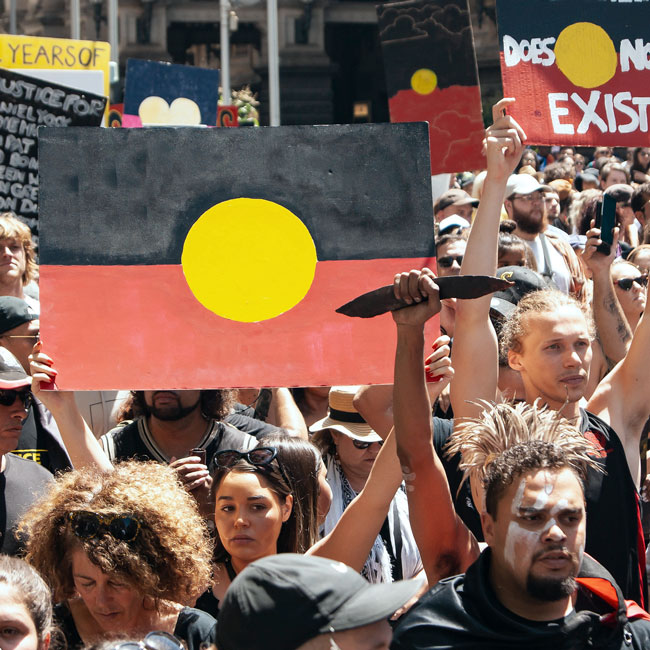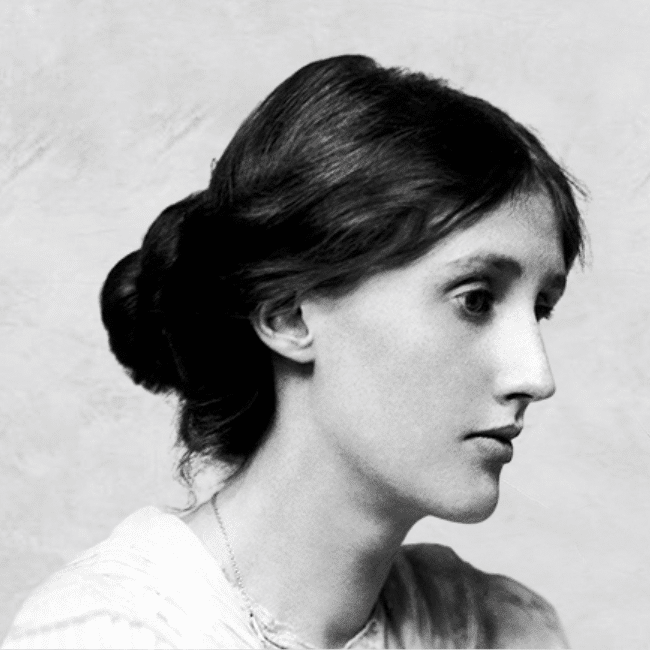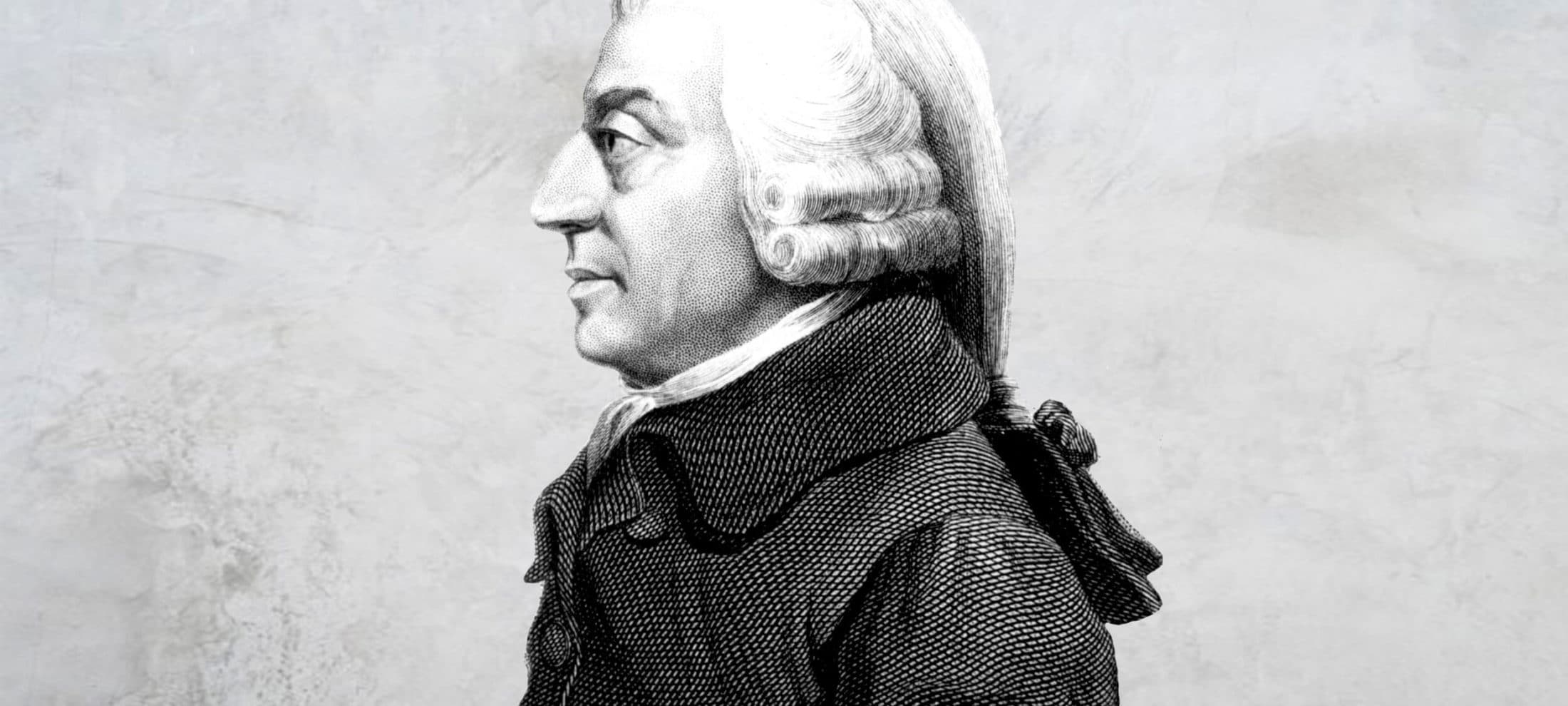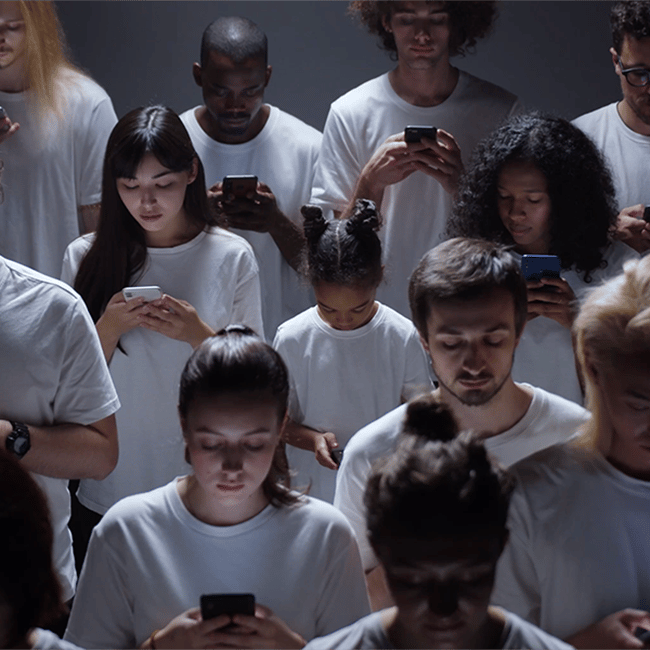Do we have to choose between being a good parent and good at our job?

Do we have to choose between being a good parent and good at our job?
Opinion + AnalysisRelationships
BY Matthew Beard The Ethics Centre 6 NOV 2019
I’m half writing this, half thinking about whether it is the best use of a few precious, toddler-free moments.
“Framing the issue of work-life balance – as if the two were dramatically opposed – practically ensures work will lose out. Who would ever choose work over life?” writes work-life guru Sheryl Sandberg.
Who indeed?
Well, for one, those who can’t afford to walk away from a job. Unless you’re living very comfortably, you’ll usually be forced to choose work over life. But even setting aside the many people who find themselves in that situation, it’s not clear we live in a world that enables people to choose life over work. Take me, for example.
Today is Friday. It’s the beginning of my three-day weekend. Thanks to flexible working arrangements, Friday is my father-son day. We go to the park, get errands done, pop out to the zoo – it’s brilliant, and I wouldn’t swap it for anything. You’d think I’m the perfect demonstration of Sandberg’s argument, but I’ve got itchy feet. So here I am, writing an op-ed.
Or rather, I’m half writing, half thinking about whether this is the best use of a few precious, toddler-free moments. Would I rather get things done around the house and revel in the simple, domestic bliss of a clean kitchen or a floor free of stickers, marbles and other paraphernalia?
I feel this back-and-forth all the time. It’s a war of identities: the professional version of me is ambitious, busy, focused and demanding; domestic me is patient, spontaneous and calm (for the most part). To be honest, it’s exhausting, and it’s beginning to make me think we haven’t fully figured out what work-life balance really means.
At the moment, we think about work-life balance in terms of the way we allocate our time. A well-balanced life is one in which you can leave work at a reasonable hour, spend enough time on parental or annual leave with loved ones, and where parents can balance care obligations to enable both people to have flourishing lives and careers.
“A well-balanced life is one in which you can leave work at a reasonable hour, spend enough time on parental or annual leave with loved ones, and where parents can balance care obligations to enable both people to have flourishing lives and careers.”
A look at recent proposals in the work-life balance seems to support this: the four-day working week, gender-balanced leave policies, email restrictions and unlimited annual leave all march to the beat of the time-maximisation drum.
This is where I think Sandberg is right – there is something wrong with painting work and life as diametrically opposed, but it’s not what she thinks. It’s because it permits a world in which “work” and “life” are kept totally separate and are permitted to operate according to different norms and values.
My favourite example of this is the unintended viral sensation Robert Kelly, his kids Marion and James and his wife Jung-a Kim, who together conspired to make the best couple of minutes of television in BBC history. After the incident, Kelly copped criticism from some circles for failing to be a good father because he didn’t scoop his daughter up and pop her on his knee during an international broadcast interview. By contrast, the BBC praised Kelly for his professionalism.
Whether Kelly did the right thing or not depends on how you define him in that precise moment. Was he a father or a professor? For Kelly, in the midst of that moment, the dilemma is the same: who should he choose to be, right now?
Unfortunately, based on our current norms around professionalism, he can’t be both at the same time. According to the scripts he seems to have been judged by, Kelly needed to be detached, rational and stoic and simultaneously warm, unconditionally affectionate and responsive. And this is why I think the work-life balance discussion needs to go beyond time and begin to think about identity. We need to permit people to express their domestic identities in the workplace – to redefine what it means to be professional so that it’s not unrecognisable to the people who know us in our personal lives.
These are all good things, but I’m not sure they can do the job on their own. Australian men often don’t take all the parental leave they’re entitled to. There’s little point giving people all this time if those people don’t know what to do with it, or aren’t equipped to use it as they should.
“As we continue to deconstruct unhelpful, gendered divisions of labour that force women to take on domestic and emotional labour and leave men to seek paid employment, there’s a good chance more people are going to start facing these choices – between professional and domestic life.”
“As we continue to deconstruct unhelpful, gendered divisions of labour that force women to take on domestic and emotional labour and leave men to seek paid employment, there’s a good chance more people are going to start facing these choices – between professional and domestic life.”
This isn’t just important for wellbeing. Bringing “domestic virtues” of emotional expressiveness, vulnerability and the like into the workforce helps shape people’s character. Our environments shape who we are. The more we’re encouraged to be competitive, ambitious or whatever else in the workplace, the harder it will be to switch gears and express patience, humility or generosity at home.
The purpose of work-life balance is to help people to flourish, live happy lives outside of work and develop into well-rounded human beings. If we’re going to do that, we need to let people be well-rounded at work too.
This article was written for, and first published by The Guardian. Republished with permission.
Ethics in your inbox.
Get the latest inspiration, intelligence, events & more.
By signing up you agree to our privacy policy
You might be interested in…
Explainer
Relationships
Ethics Explainer: Vulnerability
Opinion + Analysis
Health + Wellbeing, Relationships
Pop Culture and the Limits of Social Engineering
Explainer
Relationships
Ethics Explainer: Particularism
Opinion + Analysis
Relationships, Society + Culture
Breakdowns and breakups: Euphoria and the moral responsibility of artists
BY Matthew Beard
Matt is a moral philosopher with a background in applied and military ethics. In 2016, Matt won the Australasian Association of Philosophy prize for media engagement. Formerly a fellow at The Ethics Centre, Matt is currently host on ABC’s Short & Curly podcast and the Vincent Fairfax Fellowship Program Director.
BY The Ethics Centre
The Ethics Centre is a not-for-profit organisation developing innovative programs, services and experiences, designed to bring ethics to the centre of professional and personal life.
Ethics Explainer: Agape

How many people do you think we can love? Can we love everyone? Can we love everyone equally? The answers to these questions obviously depend on what the nature of this kind of love is, and what it looks like or demands of us in practice.
“Love is all you need”
Agape is a form of love that is commonly referred to as ‘neighbourly love’, the love ethic, or sometimes ‘universal love’. It rests on the idea that all people are our ‘brothers and sisters’ who deserve our care and respect. Agape invites us to actively consider and act upon the interests of other people, in more-or-less the same proportion as you consider (and usually act upon) your own interests.
We can trace the concept back to Ancient Greece, a time in which they had more than one word to describe various kinds of love. Commonly, useful distinctions can be made between eros, philia, and agape.
Eros is the kind of love we most often associate with romantic partners, particularly in the early stages of a love affair. It’s the source of English words like ‘erotic’ and ‘erotica’.
Philia generally refers to the affection felt between friends or family members. It is non-sexual in nature and usually reciprocal. It is characterised by a mutual good will that manifests in friendship.
Although both eros and philia have others as their focus, they can both entail a kind of self-interest or self-gratification (after all, in an ideal world our friends and lovers both give us pleasure).
Agape is often contrasted to these kinds of love because it lacks self-interest, self-gratification or self-preservation. It is motivated by the interest and welfare of all others. It is global and compassionate, rather than focussed on a single individual or a few people.
Another significant difference between agape and other forms of love is that we choose and cultivate agape. It’s not something that ‘happens’ to us like becoming a friend or falling romantically in love, it’s something we work toward. It is often considered praiseworthy and holds the lover to a high moral standard.
Agape is a form of love that values each person regardless of their individual characteristics or behaviour. In this way it is usually contrasted to eros or philia, where we usually value and like a person because of their characteristics.
Agape in traditional texts
The concept of agape we now have has been strongly influenced by the Christian tradition. It symbolises the love God has for people, and the love we (should) have for God in return. By extension, if we love our ‘neighbours’ (others) as we do God, then we should also love everyone else in a universal and unconditional manner, simply because they are created in the likeness of God.
The Jesus narrative asks followers to act with love (agape) regardless of how they feel. This early Christian ethical tradition encourages us to “love thy neighbour as thyself”. In the Buddhist tradition K’ung Fu-tzu (Confucius) similarly says, “Work for the good of others as you would work for your own good.”
Another great exponent of this ethic of love is Mahatma Gandhi who lived, worked, and died to keep this transcendent idea of universal love alive. Gandhi was known for saying, “Hate the sin, love the sinner”.
Advocates for non-violent resistance and pacifism that include Gandhi, Martin Luther King, Jr., and John Lennon and Yoko Ono also refer to the power of love as a unifying force that can overcome hate and remind us of our common humanity, regardless of our individual differences.
Such ideology rests on principles that are resonant with agape, urging us to love all people and forgive them for whatever wrongs we believe they have committed. In this way, agape sets a very high moral standard for us to follow.
However, this idea of generalised, unconditional love leaves us with an important and challenging question: is it possible for human beings to achieve? And if so, how far may it extend? Can we really love the whole of humanity?
Ethics in your inbox.
Get the latest inspiration, intelligence, events & more.
By signing up you agree to our privacy policy
You might be interested in…
Opinion + Analysis
Relationships, Society + Culture
Based on a true story: The ethics of making art about real-life others
Big thinker
Relationships, Society + Culture
Five Australian female thinkers who have impacted our world
Opinion + Analysis
Health + Wellbeing, Relationships, Society + Culture
Look at this: the power of women taking nude selfies
Opinion + Analysis
Relationships
Is modesty an outdated virtue?
BY Dr Laura D’Olimpio
Dr Laura D’Olimpio is senior lecturer in philosophy of education at the University of Birmingham, UK, and co-edits the Journal of Philosophy in Schools.
BY The Ethics Centre
The Ethics Centre is a not-for-profit organisation developing innovative programs, services and experiences, designed to bring ethics to the centre of professional and personal life.
MIT Media Lab: look at the money and morality behind the machine

MIT Media Lab: look at the money and morality behind the machine
Opinion + AnalysisBusiness + LeadershipScience + Technology
BY Matthew Beard 18 SEP 2019
When convicted sex offender, alleged sex trafficker and financier to the rich and famous Jeffrey Epstein was arrested and subsequently died in prison, there was a sense that some skeletons were about to come out of the closet.
However, few would have expected that the death of a well-connected, social high-flying predator would call into disrepute one of the world’s most reputable AI research labs. But this is 2019, so anything can happen. And happen it has.
Two weeks ago, New Yorker magazine’s Ronan Farrow reported that Joi Ito, the director of MIT’s prestigious Media Lab, which aims to “focus on the study, invention, and creative use of digital technologies to enhance the ways that people think, express, and communicate ideas, and explore new scientific frontiers,” had accepted $7.5 million in anonymous funding from Epstein, despite knowing MIT had him listed as a “disqualified donor” – presumably because of his previous convictions for sex offences.
Emails obtained by Farrow suggest Ito wrote to Epstein asking for funding to continue to pay staff salaries. Epstein allegedly procured donations from other philanthropists – including Bill Gates – for the Media Lab, but all record of Epstein’s involvement was scrubbed.
Since this has been made public, Ito – who lists one of his areas of expertise as “the ethics and governance of technology” – has resigned. The funding director who worked with Ito at MIT, Peter Cohen, now working at another university, has been placed on administrative leave. Staff at MIT Media Lab have resigned in protest and others are feeling deeply complicit, betrayed and disenchanted at what has transpired.
What happened at MIT’s Media Lab is an important case study in how the public conversation around the ethics of technology needs to expand to consider more than just the ethical character of systems themselves. We need to know who is building these systems, why they’re doing so and who is benefitting. In short, ethical considerations need to include a supply chain analysis of how the technology came to be created.
This is important is because technology ethics – especially AI ethics – is currently going through what political philosopher Annette Zimmerman calls a “gold rush”. A range of groups, including The Ethics Centre, are producing guides, white papers, codes, principles and frameworks to try to respond to the widespread need for rigorous, responsive AI ethics. Some of these parties genuinely want to solve the issues; others just want to be able to charge clients and have retail products ready to go. In either case, the underlying concern is that the kind of ethics that gets paid gets made.
For instance, funding is likely to dictate where the world’s best talent is recruited and what problems they’re asked to solve. Paying people to spend time thinking about these issues, providing the infrastructure for multidisciplinary (or in MIT Media Lab’s case, “anti disciplinary”) groups to collaborate is expensive. Those with money will have a much louder voice in public and social debates around AI ethics and have considerable power to shape the norms that will eventually shape the future.
This is not entirely new. Academic research – particularly in the sciences – has always been fraught. It often requires philanthropic support, and it’s easy to rationalise the choice to take this from morally questionable people and groups (and, indeed, the downright contemptible). Vox’s Kelsey Piper summarised the argument neatly: “Who would you rather have $5 million: Jeffrey Epstein, or a scientist who wants to use it for research? Presumably the scientist, right?”
What this argument misses, as Piper points out, is that when it comes to these kinds of donations, we want to know where they’re coming from. Just as we don’t want to consume coffee made by slave labour, we don’t want to chauffeured around by autonomous vehicles whose AI was paid for by money that helped boost the power and social standing of a predator.
More significantly, it matters that survivors of sexual violence – perhaps even Epstein’s own – might step into vehicles, knowingly or not, whose very existence stemmed from the crimes whose effects they now live with.
Paying attention to these concerns is simply about asking the same questions technology ethicists already ask in a different context. For instance, many already argue that the provenance of a tech product should be made transparent. In Ethical by Design: Principles for Good Technology, we argue that:
The complete history of artefacts and devices, including the identities of all those who have designed, manufactured, serviced and owned the item, should be freely available to any current owner, custodian or user of the device.
It’s a natural extension of this to apply the same requirements to the funding and ownership of tech products. We don’t just need to know who built them, perhaps we also need to know who paid for them to be built, and who is earning capital (financial or social) as a result.
AI and data ethics have recently focused on concerns around the unfair distribution of harms. It’s not enough, many argue, that an algorithm is beneficial 95% of the time, if the 5% who don’t benefit are all (for example) people with disabilities or from another disadvantaged, minority group. We can apply the same principle to the Epstein funding: if the moral costs of having AI funded by a repeated sex offender are borne by survivors of sexual violence, then this is an unacceptable distribution of risks.
MIT Media Lab, like other labs around the world, literally wants to design the future for all of us. It’s not unreasonable to demand that MIT Media Lab and other groups in the business of designing the future, design it on our terms – not those of a silent, anonymous philanthropist.
Ethics in your inbox.
Get the latest inspiration, intelligence, events & more.
By signing up you agree to our privacy policy
You might be interested in…
Opinion + Analysis
Business + Leadership, Climate + Environment, Society + Culture
Overcoming corruption in Papua New Guinea
Opinion + Analysis
Business + Leadership
Risky business: lockout laws, sharks, and media bias
Opinion + Analysis
Health + Wellbeing, Relationships, Science + Technology
Periods and vaccines: Teaching women to listen to their bodies
Opinion + Analysis
Business + Leadership, Politics + Human Rights
Could a virus cure our politics?
BY Matthew Beard
Matt is a moral philosopher with a background in applied and military ethics. In 2016, Matt won the Australasian Association of Philosophy prize for media engagement. Formerly a fellow at The Ethics Centre, Matt is currently host on ABC’s Short & Curly podcast and the Vincent Fairfax Fellowship Program Director.
Ageing well is the elephant in the room when it comes to aged care

Ageing well is the elephant in the room when it comes to aged care
Opinion + AnalysisHealth + WellbeingRelationships
BY Matthew Beard 18 SEP 2019
I recently came across a quote from philosopher Jean Jacques Rousseau, talking about what it means to live well:
“To live is not to breathe but to act. It is to make use of our organs, our senses, our faculties, of all the parts of ourselves which give us the sentiment of our existence. The man who has lived the most is not he who has counted the most years but he who has most felt life. Men have been buried at one hundred who have died at their birth.”
Perhaps unsurprisingly, I found myself nodding sagely along as I read. Because life isn’t something we have, it’s something we do. It is a set of activities that we can fuse with meaning. There doesn’t seem much value to living if all we do with it is exist. More is demanded of us.
Rousseau’s quote isn’t just sage; it’s inspiring. It makes us want to live better – more fully. It captures an idea that moral philosophers have been exploring for thousands of years: what it means to ‘live well’ – to have a life worth living.
Unfortunately, it also illustrates a bigger problem. Because in our current reality, not everyone is able to live the way Rousseau outlines as being the gold standard for Really Good LivingTM.
This is a reality that professionals working in the aged care sector should know all too well. They work directly with people who don’t have full use of their organs, their faculties or their senses. And yet when I presented Rousseau’s thought to a room full of aged care professionals recently, they felt the same inspiration and agreement that I’d felt.
That’s a problem.
If the good life looks like a robust, activity-filled life, what does that tell us about the possibility for the elderly to live well? And if we don’t believe that the elderly can live well, what does that mean for aged care?
If you have been following the testimony around the Aged Care Royal Commission, you’ll be aware of the galling evidence of misconduct, negligence and at times outright abuse. The most vulnerable members of our communities, and our families, have been subject to mistreatment due in part to a commercial drive to increase the profitability of aged care facilities at the expense of person-centred care .
Absent from the discussion thus far has been the question of ‘the good life’. That’s understandable given the range of much more immediate and serious concerns facing the aged care sector, but it is one that cannot be ignored.
In 2015, celebrity chef and aged care advocate Maggie Beer told The Ethics Centre that she wanted “to create a sense of outrage about [elderly people] who are merely existing”. Since then she has gone on to provide evidence to the Royal Commission, because she believes that food is about so much more than nutrition. It’s about memory, community, pleasure and taking care and pride in your work.
Consider the evidence given around food standards in aged care. There have been suggestions that uneaten food is being collected and reused in the kitchens for the next meal; that there is a “race to the bottom” to cut costs of meals at the expense of quality, and that the retailers selling to aged care facilities wildly inflate their prices. The result? Bad food for premium prices.
We should be disturbed by this. This food doesn’t even permit people to exist, let alone flourish. It leaves them wasting away, undernourished. It’s abhorrent. But what should be the appropriate standard for food within aged care? How should we determine what’s acceptable? Do we need food that is merely nutritious and of an acceptable standard, or does it need to do more than that?
Answering that question requires us to confront an underlying question:
Do we believe aged care is simply about providing people’s basic needs until they eventually die?
Or is it much more than that? Is it about ensuring that every remaining moment of life provides the “sentiment of existence” that Rousseau was concerned with?
When you look at the approximately 190,000 words of testimony that’s been given to the Royal Commission thus far, a clear answer begins to emerge. Alongside terms like ‘rights’, ‘harms’ and ‘fairness’ –which capture the bare minimum of ethical treatment for other people – appear words such as ‘empathy’, ‘love’ and ‘connection’. These words capture more than basic respect for persons, they capture a higher standard of how we should relate to other people. They’re compassionate words. People are expressing a demand not just for the elderly to be cared for, but to be cared about.
Counsel assisting the Royal Commission, Peter Gray QC, recently told the commission that “a philosophical shift is required, placing the people receiving care at the centre of quality and safety regulation. This means a new system, empowering them and respecting their rights.”
It’s clear that a philosophical shift is necessary. However, I would argue that what’s not clear is if ‘person-centred care’ is enough. Because unless we are able to confront the underlying social belief that at a certain age, all that remains for you in life is to die, we won’t be able to provide the kind of empowerment you felt reading Rousseau at the start of this article.
There is an ageist belief embedded within our society that all of the things that make life worth living are unavailable to the elderly. As long as we accept that to be true, we’ll be satisfied providing a level of care that simply avoids harm, rather than one that provides for a rich, meaningful and satisfying life.
Ethics in your inbox.
Get the latest inspiration, intelligence, events & more.
By signing up you agree to our privacy policy
You might be interested in…
Opinion + Analysis
Relationships
Parenting philosophy: Stop praising mediocrity
Explainer
Business + Leadership, Relationships
Ethics Explainer: Moral injury
Opinion + Analysis
Politics + Human Rights, Relationships, Society + Culture
Stop giving air to bullies for clicks
Opinion + Analysis
Climate + Environment, Relationships
Care is a relationship: Exploring climate distress and what it means for place, self and community
BY Matthew Beard
Matt is a moral philosopher with a background in applied and military ethics. In 2016, Matt won the Australasian Association of Philosophy prize for media engagement. Formerly a fellow at The Ethics Centre, Matt is currently host on ABC’s Short & Curly podcast and the Vincent Fairfax Fellowship Program Director.
Courage isn’t about facing our fears, it’s about facing ourselves

Courage isn’t about facing our fears, it’s about facing ourselves
Opinion + AnalysisRelationships
BY Matthew Beard 22 AUG 2019
What was your first lesson in courage? The first time someone told you to be brave – or explained to you that fear was something to be overcome, not something that should control you?
I can’t remember the very first moment I encountered the idea of courage, but the first I can remember – and the one that has stayed with me the longest – is this: “being brave doesn’t mean we looking for trouble.”
It is, of course, from Disney’s The Lion King. Mufasa, moments after saving his son, Simba, from ravenous hyenas, chastises his boy for putting himself and his friend in danger.
Simba’s journey in The Lion King is really a treatise on courage. From a reckless, thrill-seeking child, Simba loses his father and, believing himself responsible, flees from the social judgement that might bring.
Simba takes his father’s lesson too far: he doesn’t look for trouble, but when it finds him, he runs from it. He lives as an exile in a hedonistic paradise. Comfortable, apathetic, safe. For all his physical prowess, Simba is a coward.
Of course, by the end of the film Simba has found courage. He accepts his identity as the true king, admits his shame publicly, defeats Scar (his true enemy) and takes his place in the circle of life, complete with staggering musical accompaniment.
As well as having a soundtrack that’s jam-packed with bangers, it turns out the Lion King has a strong philosophical pedigree.
Courage as a virtue
The Greek philosopher Aristotle believed that courage was as virtue – a marker of moral excellence. More specifically, it was the virtue that moderated our instincts toward recklessness on one hand and cowardice on the other.
He believed the courageous person feared only things that are worthy of fear. Courage means knowing what to fear and responding appropriately to that fear.
For Aristotle, what mattered isn’t just whether you face your fears, but why you face them and what it is that you fear.
There is something important here. Your reasons for overcoming fear matter. They can be the difference between courage, cowardice and recklessness.
For instance, in Homer’s Iliad, the Trojan prince Hector threatens to punish any soldier he sees fleeing from the fight. In World War I, soldiers who deserted were executed.
Were these soldiers courageous? The only reason they risk death from the enemy is because they’re guaranteed to be killed if they don’t. The fear of death is still what drives them.
More courageous, says Aristotle, is the soldier who freely chooses to fight despite having no personal reason to do so besides honour and nobility. In fact, for Aristotle, this is the highest form of courage – it faces the greatest fear (death) for the most selfless reason (the nation).
Of course, Aristotle was an Ancient Greek bloke, so we should take his prioritising of military virtue with a grain of salt. Is death at war really to be so highly prized?
For one thing, in a culture like Ancient Greece or Troy, the failure to be an excellent warrior would be met with enormous dishonour. How many soldiers went to war for fear of dishonour? Is dishonour something to be rightly feared? And if so, whose dishonour should we fear?
Surely not that of a society whose moral compass prioritises victory over justice – risking your life to support a cause like that is reckless.
If courage means fearing dishonour from those who are morally corrupt, then a courageous enemy is worse than a cowardly one. Courage becomes like a superpower – making some people into heroes and others villains.
But there’s a deeper reason to doubt Aristotle’s idea of the highest courage. Whilst most of us do fear death, it’s not clear that it’s the thing we fear most. Even if we do fear death, we have a range of different reasons for doing so.
Our deepest fears
Perhaps my most visceral fear is of drowning. The thought of it is enough to make me feel short of breath. Perhaps that’s because of an experience when I was younger – when I was overseas I learned that my Dad nearly drowned. It was perhaps the first time I really had to come to grips with the fact he was mortal – and so was I – and all that I loved.
Today, I fear death because it would mean never seeing my children grow up. Never holding them one last time. Seeing my son’s first days at school. Hearing my daughter’s first words.
Worse, I wouldn’t be sure that they were safe and flourishing. If someone could guarantee that, perhaps I’d be less fearful of death. It’s not the death I fear; it’s what it represents: an incomplete life, failed commitments, unending love brought to a close.
Aristotle didn’t consider courage in the face of existential anxieties like these. What does it mean to live courageously in a world where all our loves, passions and projects expose us to pain and loss? To live is to have a nerve constantly exposed to the world – always vulnerable to suffering.
The French psychoanalyst and philosopher Anne Dufourmantelle argues that risk is an inherent part of living fully in the world. Risk-free living, she argues, is not living at all. Courage is as much about living despite knowing the exposed nerve of love and passion could trigger chest-tightening pain at any moment.
Yet so often we close ourselves from the world to keep ourselves safe. We self-censor not because we think we might be wrong, but because we fear upsetting the wrong person. We withdraw from relationships because we don’t want to be the one to take the leap. We tell ourselves stories in the shower of all the things we could do – could be – if only the world let us.
Existentialist philosophers have a name for this kind of self-deception: bad faith – a kind of failure to engage with the world as it really is and accepting ourselves as we are and as we could be.
Too often we think of courage purely as facing up to our fears. What that misses is how deeply connected our fears are with deeper beliefs about who we are, who we want to be, who we love and what we wish the world was.
A courageous truth
Maybe the truth of courage is that it’s all about truth. It’s about looking reality in the face and having the force of will not to turn away, despite the pain, the unpleasantness and the risk.
Maybe it’s about looking for long enough to see the joy in the pain; the beauty in the ugliness and the comfort that lies in the little risks we take every day.
Perhaps it’s only then we can know what’s worth dying for – and what’s worth living for. Certainly, Dufourmantelle gives us some hope of this. In 2017, she died in rough seas off the coast of France, having swum out to rescue two children caught in the surf.
The children survived, but how many of us would have dived in? How many would have hoped for a lifeguard? A stronger swimmer? For the children to rescue themselves?
I want to encourage you to think: are there rough waters you’re not jumping into for fear of the waves? Do you tend to dive in without counting the costs?
Dr Matt Beard was the host of The Ethics of Courage, alongside Saxon Mullins and Benjamin Law at The Ethics Centre on 21 August. This is a transcript of his opening address.
Ethics in your inbox.
Get the latest inspiration, intelligence, events & more.
By signing up you agree to our privacy policy
You might be interested in…
Opinion + Analysis
Relationships, Society + Culture
Barbie and what it means to be human
Opinion + Analysis
Relationships, Science + Technology
To fix the problem of deepfakes we must treat the cause, not the symptoms
Opinion + Analysis
Health + Wellbeing, Relationships
It’s easy to ignore the people we can’t see
Big thinker
Relationships
Big Thinker: Jean-Paul Sartre
Join our newsletter
BY Matthew Beard
Matt is a moral philosopher with a background in applied and military ethics. In 2016, Matt won the Australasian Association of Philosophy prize for media engagement. Formerly a fellow at The Ethics Centre, Matt is currently host on ABC’s Short & Curly podcast and the Vincent Fairfax Fellowship Program Director.
Time for Morrison’s ‘quiet Australians’ to roar

Time for Morrison’s ‘quiet Australians’ to roar
Opinion + AnalysisPolitics + Human Rights
BY Simon Longstaff 21 AUG 2019
The Prime Minister, Scott Morrison, has attributed his electoral success to the influence of ‘Quiet Australians’.
It is an evocative term that pitches somewhere between that of the ‘silent majority’ and Sir Robert Menzies’ concept of the ‘Forgotten People’. Unfortunately, I think that the phrase will have a limited shelf-life because increasing numbers of Australians are sick of being quiet and unobserved.
In the course of the last federal election, I listened to three mayors being interviewed about the political mood of their rural and regional electorates. They said people would vote to ensure that their electorates became ‘marginal’. Despite their political differences, they were unanimous in their belief that this was the only way to be noticed. They are the cool tip of a volcano of discontent.
Quiet or invisible?
Put simply, I think that most Australians are not so much ‘quiet’, as ‘invisible’ – unseen by a political class that only notices those who confer electoral advantage. Thus, the attention given to the marginal seat or the big donor or the person who can guarantee a favourable headline and so on…
The ‘invisible people’ are fearful and angry.
They fear that their jobs will be lost to expert systems and robots. They fear that, without a job, they will be unable to look after their families. They fear that the country is unprepared to meet and manage the profound challenges that they know to be coming – and that few in government are willing to name.
They are angry that they are held accountable to a higher standard than government ministers or those running large corporations. They are angry that they will be discarded as the ‘collateral damage’ of progress.
And in many ways, they are right.
Is democracy failing us?
After all, where is the evidence to show that our democracy is consciously crafting a just and orderly transition to a world in which climate change, technological innovation and new geopolitical realities are reshaping our society? Will democracy hold in such a world?
By definition, democracy accords a dignity to every citizen – not because they are a ‘customer’ of government, but – because citizens are the ultimate source of authority. The citizen is supposed to be at the centre of the democratic state. Their interests should be paramount.
Yet this fundamental ‘promise’ seems to have been broken. The tragedy in all of this is that most politicians are well-intentioned. They really do want to make a positive contribution to their society. Yet, somehow the democratic project is at risk of losing its legitimacy – after which it will almost certainly fail.
In the end, while it’s comforting to whinge about politicians, the media, and so on, the quality of democracy lies in the hands of the people. We cannot escape our responsibility. Nor can we afford to remain ‘quiet’. Instead, wherever and whoever we may be, let’s roar: We are citizens. We demand to be seen. We will be heard.
The Ethics Centre’s next IQ2 debate – Democracy is Failing the People – is on Tuesday 27 August at Sydney Town Hall. Presenter and comedian Craig Reucassel will join political veteran Amanda Vanstone to go up against youth activist Daisy Jeffrey and economist Dr Andrew Charlton to answer if democracy is serving us, or failing us.
Ethics in your inbox.
Get the latest inspiration, intelligence, events & more.
By signing up you agree to our privacy policy
You might be interested in…
Big thinker
Health + Wellbeing, Politics + Human Rights, Relationships
Big Thinker: Judith Butler
Opinion + Analysis
Politics + Human Rights, Relationships, Society + Culture
Film Review: If Beale Street Could Talk
Opinion + Analysis
Politics + Human Rights, Science + Technology
Who’s to blame for Facebook’s news ban?
WATCH
Politics + Human Rights
James C. Hathaway on the refugee convention
Join our newsletter
BY Simon Longstaff
Simon Longstaff began his working life on Groote Eylandt in the Northern Territory of Australia. He is proud of his kinship ties to the Anindilyakwa people. After a period studying law in Sydney and teaching in Tasmania, he pursued postgraduate studies as a Member of Magdalene College, Cambridge. In 1991, Simon commenced his work as the first Executive Director of The Ethics Centre. In 2013, he was made an officer of the Order of Australia (AO) for “distinguished service to the community through the promotion of ethical standards in governance and business, to improving corporate responsibility, and to philosophy.” Simon is an Adjunct Professor of the Australian Graduate School of Management at UNSW, a Fellow of CPA Australia, the Royal Society of NSW and the Australian Risk Policy Institute.
How to spot an ototoxic leader

How to spot an ototoxic leader
Opinion + AnalysisBusiness + Leadership
BY John Neil The Ethics Centre 13 AUG 2019
We all know about toxic leaders. There are plenty of them around. Some are especially skilled with the ability to use their words to grind down anyone they perceive as a threat.
I call these leaders ototoxic – named after the medical description of drugs that cause adverse reactions to the ears’ cochlea or auditory nerves.
Ototoxicity is a distinctive quality of a poor leader, who can leave a trail of damage.
Ototoxic leaders betray themselves by a number of logical fallacies – hallmarks of their communication style. US President Donald Trump has given us plenty of examples during his presidency.
They play the person not the argument
The ototoxic leader will go after a person’s character or pick on a personal trait. They take aim at anything personal, but will avoid addressing the logical merits of the argument. This is known as an ad hominem fallacy.
Donald Trump critiqued fellow Republicans – “Lyin’ Ted” (Cruz), “Lil’ Marco” (Rubio), “Low Energy Jeb” (Bush). There were also repeated references to “Crooked Hillary”. He repeatedly accused opponents of being “too aggressive”, (usually a woman) or “not forceful enough” (usually a man), or in the case of “Lil’ Bob” Corker, of not being “tall” enough to be taken seriously.
They use straw-man arguments
An ototoxic leader will also exaggerate, or blatantly fabricate, an opposing point of view. This allows them to position their perspective as more reasonable and practical. In the third presidential debate before his election, Trump accused Hillary Clinton of advocating an open border policy, misquoting comments she made in relation to free trade. In a climate of widespread national hostility towards immigration, the border wall seemed to many as the more reasonable option.
In the workplace, an ototoxic leader will use overblown rhetoric to belittle someone else’s initiative, exaggerating potential cost overruns or overstating other risks in order to then position their proposal as the more reasonable one.
They appeal to hypocrisy
This defensive strategy turns an initial criticism back on the accuser. Trump used this rhetorical flourish during his presidency after refusing to face criticisms that he didn’t take a position on the violence following the Charlottesville rally. Rebutting the criticisms of neo-Nazis and the Ku Klux Klan, Trump maintained that ‘many others’ had also done bad things, implying they were equally culpable.
In the workplace, an ototoxic leader can often be heard defending their actions using the appeal to hypocrisy. “You think I’m aggressive? What about that meeting last week when you didn’t agree with me? You were just as bad, if not worse!”
They use the firefighter arsonist tactic
Named after the rare syndrome where firefighters light fires intentionally only to later arrive as a hero to put it out, the ototoxic leader will overly dramatise a potential problem, at the same time pointing the finger of blame at others for causing it. Once the situation reaches a critical mass, the ototoxic leader will then step in with a last-minute solution, ‘saving the day’.
Trump is well versed in this tactic. Stoking anti-Muslim sentiment as early as March 2011 with his calls for then President Obama to show his birth certificate and trading on unfounded ‘birther’ claims, Trump proceeded to inflame fears throughout the election campaign. He threatened the mass deportation of Syrian asylum seekers while promising to create a database of all Muslims in the US, along with making false claims of seeing ‘thousands and thousands’ of people in New Jersey celebrating the collapse of the World Trade Centre Towers in 2001. Trump stepped in to solve the ‘problem’ by signing his two travel bans within the first 100 days of his tenure.
More recently, Trump repeatedly covered himself in glory after meeting Kim Jong-un at their historic first summit in June 2018. Mere months after painting Kim as “Little Rocket Man” who, according to Trump posed the greatest threat to Western civilisation and was enabled by his predecessors who “should have been handled a long time ago”, following the summit Trump celebrated the “success” of the meeting. He waxed lyrical about the leaders “tremendous” relationship, including the beautiful “love letters” he received from the North Korean dictator in the lead up to the summit, while going on to extol the virtues of Kim, including his “great personality”, his sense of humour, intelligence and his negotiation abilities. Following the script of the hero who rides in to save the day, Trump tweeted that “everybody can now feel much safer than the day I took office…there is no longer a nuclear threat from North Korea.”
In the workplace, the ototoxic leader will spark a flame of disquiet around a project or strategy then proceed to escalate concerns – often through back channel politics – before presenting a grand ‘solution’ that saves the day.
Passive and aggressive
Ototoxic leaders can be aggressive or passive. The actively toxic communicator, who uses aggressive and intimidating language to subordinate others, can be bombastic, opinionated and openly dismissive of those who have different views. Their default mode of questioning almost exclusively involves closed questions (yes or no). Their inability to be open and listen to other’s views is usually a symptom of their lack of empathy.
The passive ototoxic leader is no less poisonous. In one-on-one settings, they are an impatient listener and will quickly interrupt their interlocutor in order to express their own view, often cutting the other person off in mid-sentence.
This ototoxic leader will tend to become frustrated in meetings if the consensus view is running contrary to theirs, to the point they will actively disengage from what’s going on in the room. They will resist all attempts to re-engage them by looking to shut down the conversation wherever possible.
Energy suckers
The net effect of the ototoxic leader’s tactics and communication style is to de-energise those they come into contact with.
Research shows that these de-energising ties have a disproportionate impact on an organisation’s culture. They are a ‘toxicity multiplier’, reducing the levels of individual performance, employee engagement and general well-being.
A disproportionate level of conflict between teams is generated and trust decreases. Rather than investing the energy to achieve their goals, those who work under an ototoxic leader spend a disproportionate amount of time analysing the relationship and devising strategies to palliate the person.
Ethics in your inbox.
Get the latest inspiration, intelligence, events & more.
By signing up you agree to our privacy policy
You might be interested in…
Opinion + Analysis
Business + Leadership, Politics + Human Rights
Australia’s fiscal debt will cost Gen Z’s future
Opinion + Analysis
Business + Leadership
Why we need land tax, explained by Monopoly
Opinion + Analysis
Business + Leadership
How BlueRock uses culture to attract top talent
Opinion + Analysis
Business + Leadership, Politics + Human Rights
Should corporate Australia have a voice?
BY John Neil
As Director of Education and Innovation at The Ethics Centre, John collaborates closely with a talented team of specialists and subject matter experts to shape the tools, frameworks, and programs that drive our work forward. He brings a rich and varied background as a consultant, lecturer, and researcher, with expertise spanning ethics, cultural studies, sustainability, and innovation. This multidisciplinary perspective allows him to introduce fresh, thought-provoking approaches that energise and inspire our initiatives. John has partnered with some of Australia’s largest organisations across diverse industries, to place ethics at the heart of organisational life. His work focuses on education, cultural alignment, and leadership development to foster meaningful and lasting impact.
BY The Ethics Centre
The Ethics Centre is a not-for-profit organisation developing innovative programs, services and experiences, designed to bring ethics to the centre of professional and personal life.
Should you be afraid of apps like FaceApp?

Should you be afraid of apps like FaceApp?
Opinion + AnalysisRelationshipsScience + Technology
BY Matthew Beard 30 JUL 2019
Until last week, you would have been forgiven for thinking a meme couldn’t trigger fears about international security.
But since the widespread concerns over FaceApp last week, many are asking renewed questions about privacy, data ownership and transparency in the tech sector. But most of the reportage hasn’t gotten to the biggest ethical risk the FaceApp case reveals.
What is FaceApp?
In case you weren’t in the know, FaceApp is a ‘neural transformation filter’.
Basically, it uses AI to take a photo of your face and make it look different. The recent controversy centred on its ability to age people, pretty realistically, in just a short photo. Use of the app was widespread, creating a viral trend – there were clicks and engagements to be made out of the app, so everyone started to hop on board.
Where does your data go?
With the increasing popularity comes increasing scrutiny. A number of people soon noticed that FaceApp’s terms of use seemed to give them a huge range of rights to access and use the photos they’d collected. There were fears the app could access all the photos in your photo stream, not just the one you chose to upload.
There were questions about how you could delete your data from the service. And worst of all for many, the makers of the app, Wireless Labs, are based in Russia. US Minority Leader Chuck Schumer even asked the FBI to investigate the app.
The media commentary has been pretty widespread, suggesting that the app sends data back to Russia, lacks transparency about how it will or won’t be used and has no accessible data ethics principles. At least two of those are true. There isn’t much in FaceApp’s disclosure that would give a user any sense of confidence in the app’s security or respect for privacy.
Unsurprisingly, this hasn’t amounted to much. Giving away our data in irresponsible ways has become a bit like comfort eating. You know it’s bad, but you’re still going to do it.
The reasons are likely similar to the reasons we indulge other petty vices: the benefits are obvious and immediate; the harms are distant and abstract. And whilst we’d all like to think we’ve got more self-control than the kids in those delayed gratification psychology experiments, more often than not our desire for fun or curiosity trumps any concern we have over how our data is used.
Should you be worried?
Is this a problem? To the extent that this data – easily accessed – can be used for a range of goals we likely don’t support, yes. It also gives rise to a range of complex ethical questions concerning our responsibility.
Let’s say I willingly give my data to FaceApp. This data is then aggregated and on-sold in a data marketplace. A dataset comprising of millions of facial photos is then used to train facial recognition AI, which is used to track down political dissidents in Russia. To what extent should I consider myself responsible for political oppression on the other side of the world?
In climate change ethics, there is a school of thought that suggests even if our actions can’t change an outcome – for instance, by making a meaningful reduction to emissions – we still have a moral obligation not to make the problem worse.
It might be true that a dataset would still be on sold without our input, but that alone doesn’t seem to justify adding our information or throwing up our arms and giving up. In this hypothetical, giving up – or not caring – means abandoning my (admittedly small) role in human rights violations and political injustice.
A troubling peek into the future
In reality, it’s really unlikely that’s what FaceApp is actually using your data to do. It’s far more likely, according to the MIT Technology Review, that your face might be used to train FaceApp to get even better at what it does.
It might use your face to help improve software that analyses faces to determine age and gender. Or it might be used – perhaps most scarily – to train AI to create deepfakes or faces of people who don’t exist. All of this is a far cry from the nightmare scenario sketched out above.
But even if my horror story was accurate, would it matter? It seems unlikely.
By the time tech journalists were talking about the potential data issues with FaceApp, millions had already uploaded their photos into the app. The ship had sailed, and it set off with barely a question asked of it. It’s also likely that plenty of people read about the data issues and then installed the app just to see what all the fuss is about.
Who is responsible?
I’m pulled in two directions when I wonder who we should hold responsible here. Of course, designers are clever and intentionally design their apps in ways that make them smooth and easy to use. They eliminate the friction points that facilitate serious thinking and reflection.
But that speed and efficiency is partly there because we want it to be there. We don’t want to actually read the terms of use agreement, and the company willingly give us a quick way to avoid doing so (whilst lying, and saying we have).
This is a Faustian pact – we let tech companies sell us stuff that’s potentially bad for us, so long as it’s fun.
The important reflection around FaceApp isn’t that the Russians are coming for us – a view that, as Kaitlyn Tiffany noted for Vox, smacks slightly of racism and xenophobia. The reflection is how easily we give up our principled commitments to ethics, privacy and wokeful use of technology as soon as someone flashes some viral content at us.
In Ethical by Design: Principles for Good Technology, Simon Longstaff and I made the point that technology isn’t just a thing we build and use. It’s a world view. When we see the world technologically, our central values are things like efficiency, effectiveness and control. That is, we’re more interesting in how we do things than what we’re doing.
Two sides of the story
For me, that’s the FaceApp story. The question wasn’t ‘is this app safe to use?’ (probably no less so than most other photo apps), but ‘how much fun will I have?’ It’s a worldview where we’re happy to pay any price for our kicks, so long as that price is hidden from us. FaceApp might not have used this impulse for maniacal ends, but it has demonstrated a pretty clear vulnerability.
Is this how the world ends, not with a bang, but with a chuckle and a hashtag?
Ethics in your inbox.
Get the latest inspiration, intelligence, events & more.
By signing up you agree to our privacy policy
You might be interested in…
Opinion + Analysis
Relationships
From capitalism to communism, explained
WATCH
Relationships
How to have moral courage and moral imagination
Opinion + Analysis
Relationships, Society + Culture
Based on a true story: The ethics of making art about real-life others
Opinion + Analysis
Relationships
The philosophy of Virginia Woolf
BY Matthew Beard
Matt is a moral philosopher with a background in applied and military ethics. In 2016, Matt won the Australasian Association of Philosophy prize for media engagement. Formerly a fellow at The Ethics Centre, Matt is currently host on ABC’s Short & Curly podcast and the Vincent Fairfax Fellowship Program Director.
Big Thinker: Jeremy Bentham

The consequences of our actions are important and we should weigh these up when we consider what we should do.
Some philosophers have taken this idea even further, claiming that outcomes are the only criteria by which the moral worth of an action should be judged.
Jeremy Bentham (1748—1832) was the father of utilitarianism, a moral theory that argues that actions should be judged right or wrong to the extent they increase or decrease human well-being or ‘utility’.
He advocated that if the consequences of an action are good, then the act is moral and if the consequences are bad, the act is immoral.
Central to his argument was a belief that it is human nature to desire that which is pleasurable, and to avoid that which is painful. As a self-proclaimed atheist, he wanted to place morality on a firm, secular foundation. At the beginning of his Introduction to the Principles of Morals and Legislation, Bentham wrote:
“Nature has placed mankind under the governance of two sovereign masters, pain and pleasure. It is for them alone to point out what we ought to do, as well as to determine what we shall do.”
It is because of this emphasis on pleasure that his theory is known as hedonic utilitarianism. But this doesn’t mean we can do whatever we like. Importantly, for Bentham, it is not just one’s own happiness or pleasure that matters.
He notes, “Ethics at large may be defined, the art of directing men’s actions to the production of the greatest possible quantity of happiness.” The moral agent will perform the action that maximises happiness or pleasure for everyone involved.
Can we measure happiness?
Bentham defended an objective form of morality that could be measured in a scientific way. As an empiricist, he came up with a way to ‘weigh’ or quantify pleasures and pains as the consequences of an action.
He called this set of metaphorical scales the ‘hedonic’ or ‘felicific calculus’, allowing a rational moral agent to think through, and then act on, the right – moral– thing to do.
The ‘hedonic calculus’ is used to measure how much pain or pleasure an action will cause. It takes into consideration how near or far away the consequence will be, how intense it will be and how long it will last, if it will lead on to further pleasures or pains, and how certain we are that this consequence will result from the action under consideration.
The moral decision maker is meant to act as an ‘impartial observer’ or ‘disinterested bystander’, to be as objective as they can be and choose the action that will produce the greatest amount of good.
Do the ends justify the means?
There are some practical applications of utilitarianism. For instance, if you’re a politician in charge of making decisions that effects a large group of people, you should act in a way that maximises happiness and minimises pain and suffering. In this way, the hedonic calculus supports a welfare system that reduces unfair outcomes by redistributing wealth and resources.
Yet there are tricky aspects to the theory that must also be considered. Contemplate the saying “the ends justify the means” – what immoral action may be justified by (predicted) good consequences?
This is where ethicists start to ask tricky questions like, ‘would you kill Hitler?’. And if you answer ‘um, sure, because that will prevent a LOT of deaths’, then they will ask, ‘would you kill baby Hitler?’. You can see how it starts to get complicated.
Bentham’s theory relies on accurately predicting outcomes, and as such holds the moral agent accountable for moral luck. One might intend to do a good deed, but if an unpredictable result occurs, leading to a negative outcome, then they are still to be held morally responsible.
Visit Bentham in London
His theories were popular at University College London (UCL), where Behtham’s followers called themselves ‘Benthamites’. Among these were James Mill and his son, John Stuart Mill. J. S. Mill (1806 –1873) worried that Bentham’s theory was too hedonistic as it did not prioritise the ‘higher’ pleasures of the intellect. He added the criteria of ‘quality’ to Bentham’s calculus in order to create ‘higher’ and ‘lower’ quality pleasures.
A final, fun fact: Bentham willed his body to be preserved and displayed at UCL after his death. A visit to the philosophy department will see him in a busy hallway, merrily seated in a glass fronted mahogany case.
Ethics in your inbox.
Get the latest inspiration, intelligence, events & more.
By signing up you agree to our privacy policy
You might be interested in…
Explainer
Relationships
Ethics Explainer: Ethical judgement and moral intuition
Big thinker
Politics + Human Rights, Relationships
Big Thinker: Adam Smith
Opinion + Analysis
Relationships, Science + Technology
Age of the machines: Do algorithms spell doom for humanity?
Opinion + Analysis
Health + Wellbeing, Relationships
You are more than your job
BY Dr Laura D’Olimpio
Dr Laura D’Olimpio is senior lecturer in philosophy of education at the University of Birmingham, UK, and co-edits the Journal of Philosophy in Schools.
The role of the ethical leader in an accelerating world

The role of the ethical leader in an accelerating world
Opinion + AnalysisBusiness + LeadershipRelationships
BY Simon Longstaff 9 JUL 2019
Dr Simon Longstaff, Executive Director of The Ethics Centre, opened the recent AGSM Professional Forum: Ethical Leadership in an Accelerating World by acknowledging today’s leaders are confronted with a pace of change that is increasingly rapid, complex and deep in its implications.
They are grappling with multiple dynamic forces as they make strategic business decisions, uncover new market opportunities, and maintain their sense of purpose.
And, as we move into the Age of Purpose, they must measure up to the moral expectations of their employees, stakeholders and the public – while building trust in an increasingly sceptical environment.
As one of Australia’s leading ethicists and philosophers, Dr Longstaff said he believes ethics need to be intrinsic within leaders, especially in a time where civilisation is going through enormous change. And this starts with leaders in the boardroom. “I’d like to reframe leadership itself as an ethical practice. You can’t just add ethics into leadership. If that’s what you’re doing, you’ve misunderstood what leadership is,” he said.
Strengthening the decision-making muscle
Historically, decision-making in organisations has been heavily regulated – and Dr Longstaff says that makes it due for an overhaul. Only then can more robust ethical practices flourish throughout organisations.
“For 30 years or more, leaders have been trying to manage the rate, complexity and depth of change through the exercise of control,” said Dr Longstaff. “In this country the most prolific regulators are not in parliaments or at APRA. They’re in the boardrooms of Australia.”
He says the system has been so finely meshed that no one can choose to do anything wrong. And as a result we’ve begun to create new forms of systemic risk.
“Inside corporations, there are measures designed to make it safe. But if you create a world in which no one can choose to do anything wrong, it also means no one can choose to do anything right,” said Dr Longstaff. “If you don’t choose – you comply. And like any skill, if this muscle isn’t used and flexed, it withers away.”
This systemic impact was most clearly demonstrated in the findings of the recent Royal Commission into Misconduct in the Banking, Superannuation and Financial Services Industry. The findings uncovered the implications of inaction and the way leadership behaviour can detrimentally impact stakeholder sentiment and damage trust in an organisation.
“In many cases of a compliant culture, when asked why a certain decision has been made, the answer is ‘that’s the way things have always been done’,” said Dr Longstaff. “But the fact we can do something doesn’t mean we should do it. To do so is a sign of a cultural failure, where ethical restraint should have been exercised.”
This is what Dr Longstaff calls ‘unintended negative strategic effect’: Something that can only be rectified by progressive and collaborative leaders.
“People are inherently good,” he said. “Leaders don’t wake up thinking ‘today I’m going to see how much hypocrisy I can engage in’. They are susceptible to the greater threat of unthinking custom and practice. And this must change,” he said.
Leading with moral courage and strategic vision
To create more ethical practices, Dr Longstaff suggests leaders guide their organisations through a process of ‘constructive subversion’ – to break the cycle of ‘going with the flow’ and embedding reflective practice within its culture.
“To subvert unthinking custom and practice, decision-making processes need to come back to the notion of purpose, values and principles,” says Dr Longstaff.
An organisation must have the right intent if it is to achieve its goals. To manage this, Dr Longstaff says leaders need these three key qualities:
- Moral courage – “Leaders need to have courage at the right time in the right way to offer the practice and skills to subvert unthinking.”
- Imagination – “Great leaders can imagine what it’s like to be somebody else, whether friend or foe, and understand how they see the world.”
- Strategic vision – “Leaders need the capacity to invent or discover inflection points – knowing when it’s time to action significant change.”
If leaders can set an organisation’s intention to realise its purpose-led potential, then their people can exercise their own discretion once they adopt this belief. This breaks the cycle of unthinking practice that leads to distrust from stakeholders and shareholders.
“Trust is not hard to build or sustain – there’s no real mystery about it. It’s created when individuals or organisations can declare publicly ‘this is who we are and this is what we stand for’ and act in a manner that is consistent with that’,” said Dr Longstaff.
In his keynote’s conclusion, Dr Longstaff came back to purpose and the existing structures that are in need of an overhaul.
“What is the purpose of a bank? A corporation? A market? Limited liability? All of them have purposes – and almost all of these have been forgotten,” said Dr Longstaff.
“As a society of citizens and colleagues, when we think about ethical leadership, we have to ask ourselves what we want and what will we settle for? A world of control, compliance and surveillance? Even if that was to work, would it diminish who we are as human beings?”
This article was originally published by UNSW, republished with permission.
Ethics in your inbox.
Get the latest inspiration, intelligence, events & more.
By signing up you agree to our privacy policy
You might be interested in…
Opinion + Analysis
Health + Wellbeing, Relationships, Science + Technology
Philosophically thinking through COVID-19
Opinion + Analysis
Health + Wellbeing, Relationships
Seven COVID-friendly activities to slow the stress response
Opinion + Analysis
Business + Leadership
‘Woke’ companies: Do they really mean what they say?
Opinion + Analysis
Business + Leadership, Relationships






















